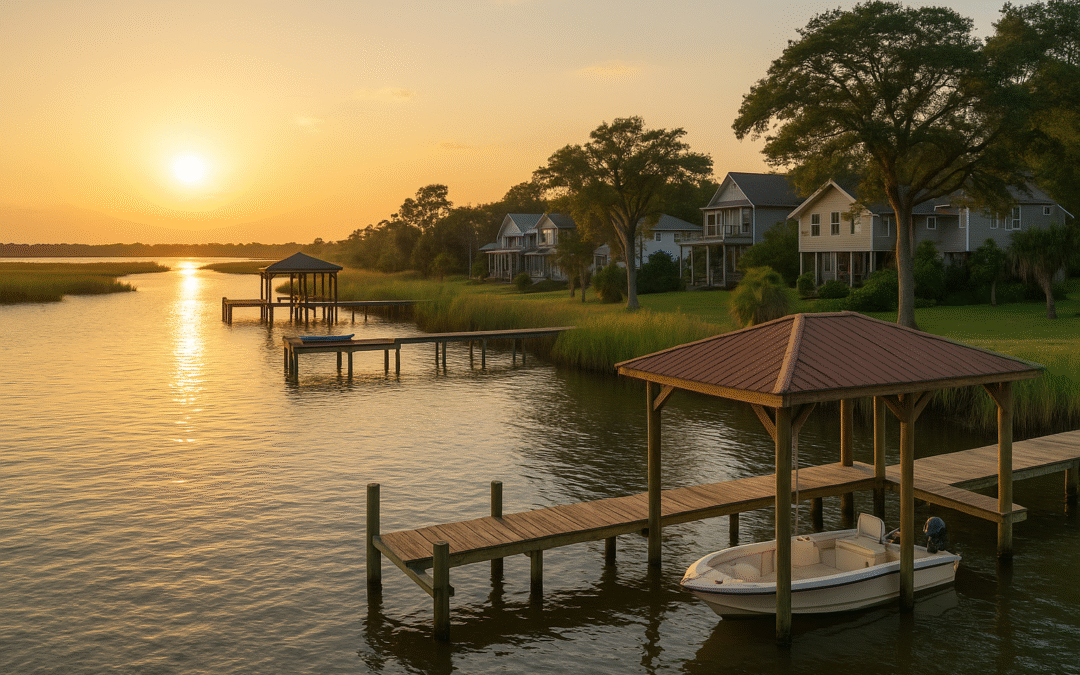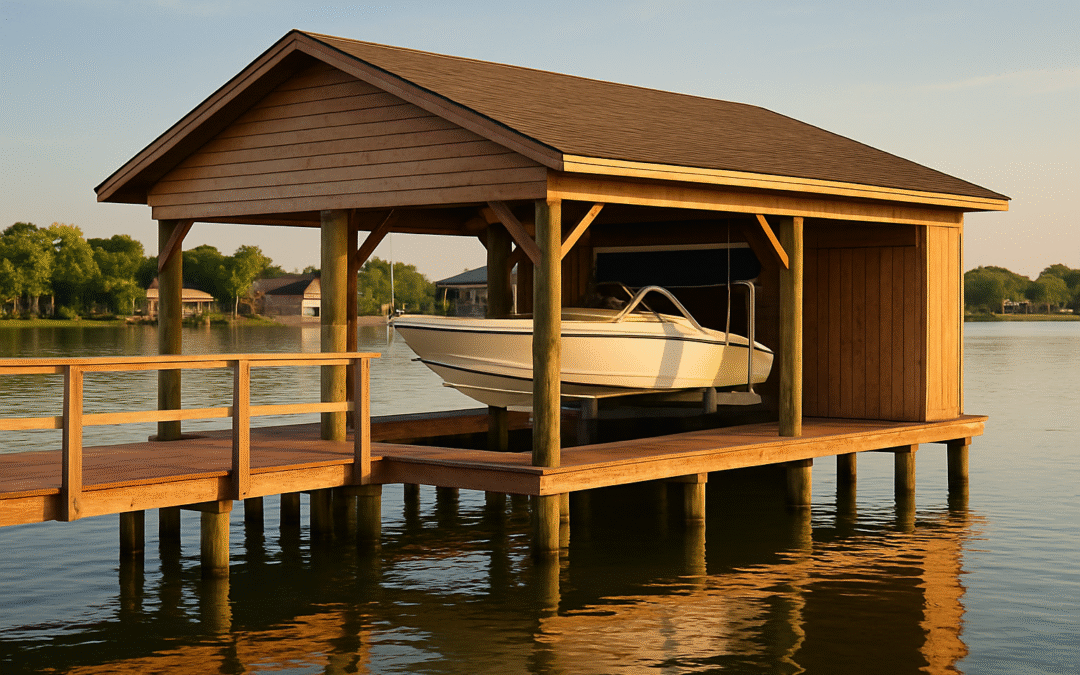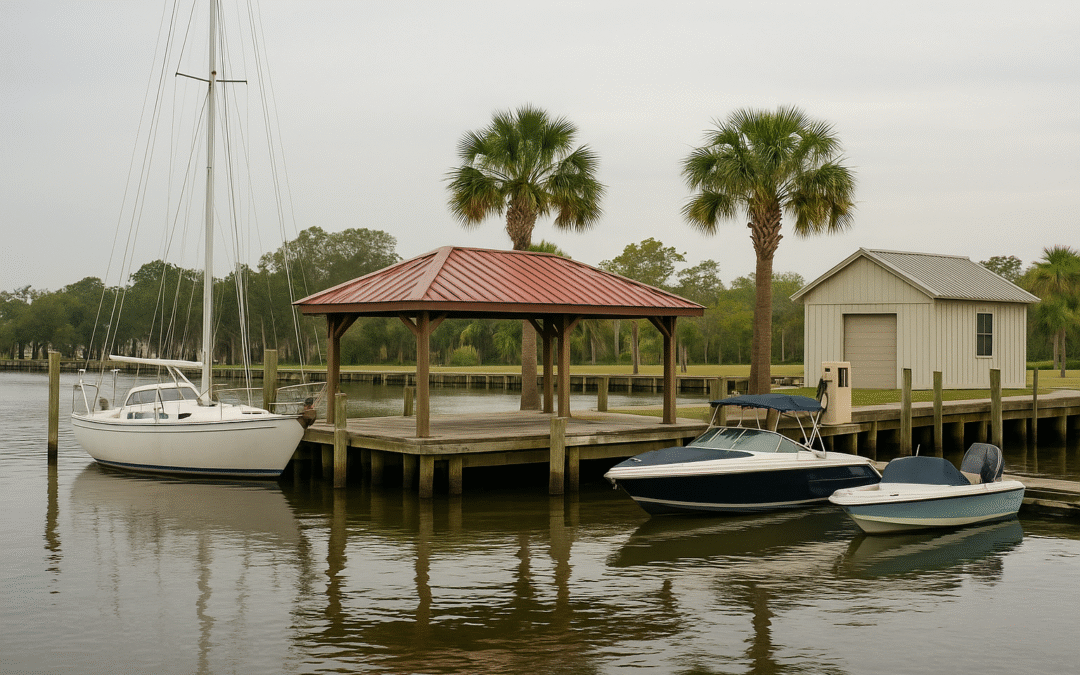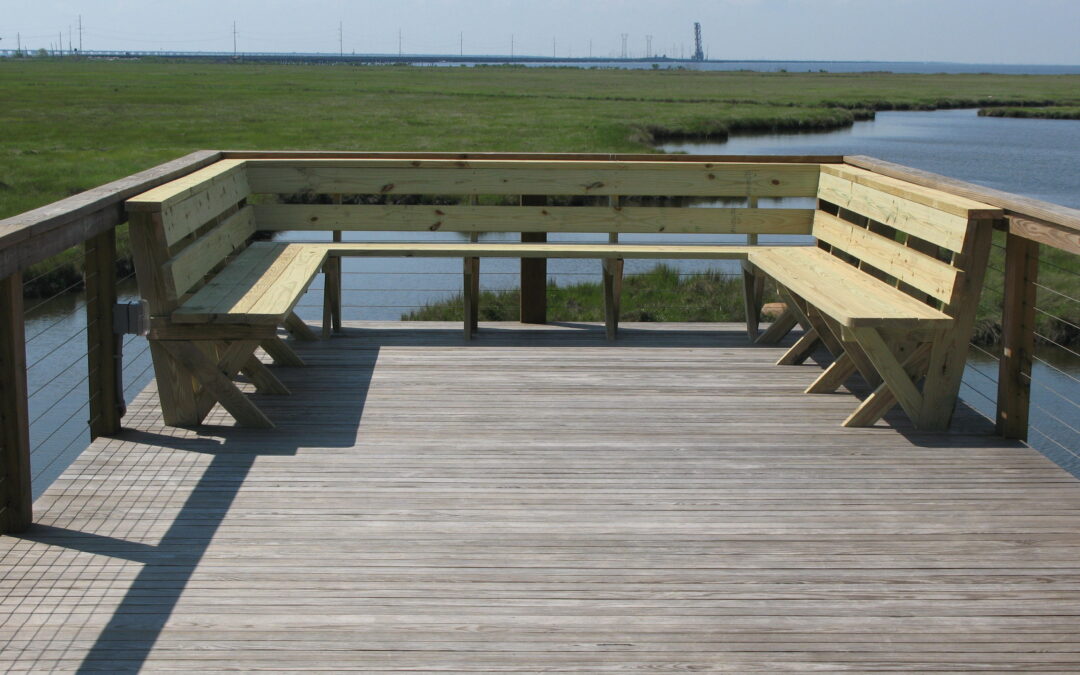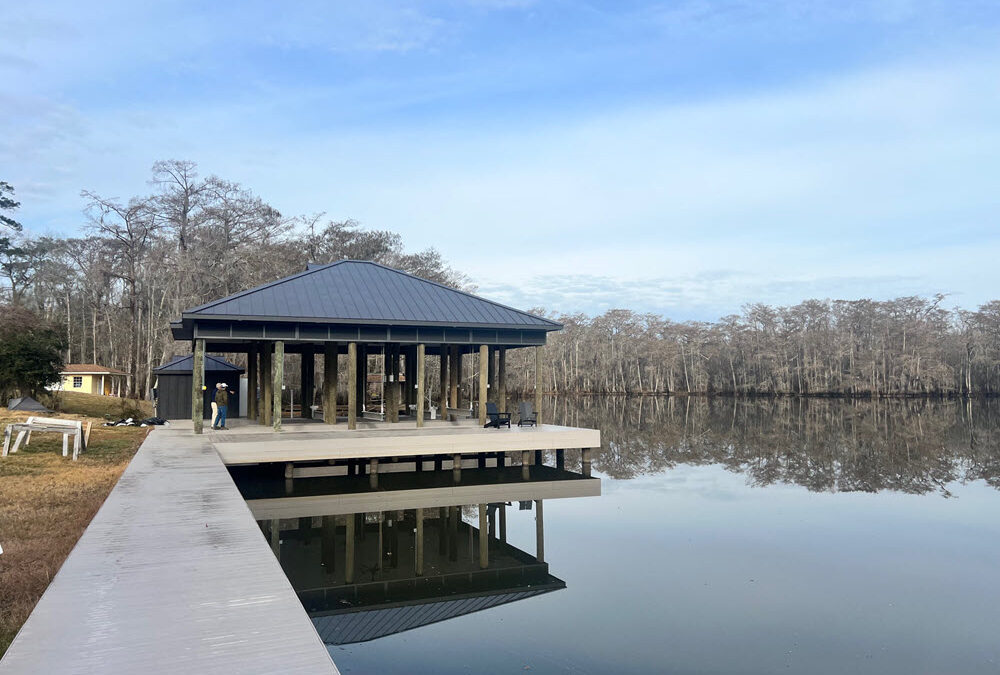Fishing is one of the most rewarding pastimes on the Mississippi Gulf Coast and beyond. It connects us to nature, provides food for the table, and creates memories that last a lifetime. But whether you are casting from a dock, paddling a kayak through calm bay waters, or taking your boat offshore in search of bigger species, your success depends heavily on one thing: fishing tackle.
“Fishing tackle” is a term that covers all the gear and equipment used to catch fish. While many people think immediately of rods and reels, tackle also includes the hooks, lines, sinkers, floats, lures, and accessories that make fishing possible. Understanding fishing tackle, how it works, and how to choose the right pieces for your target species is one of the best ways to improve your skills as an angler. In this guide, we’ll explore everything from the basics of fishing tackle to advanced techniques, storage, and maintenance tips—all while tying in how a private dock can make using your tackle easier and more enjoyable.
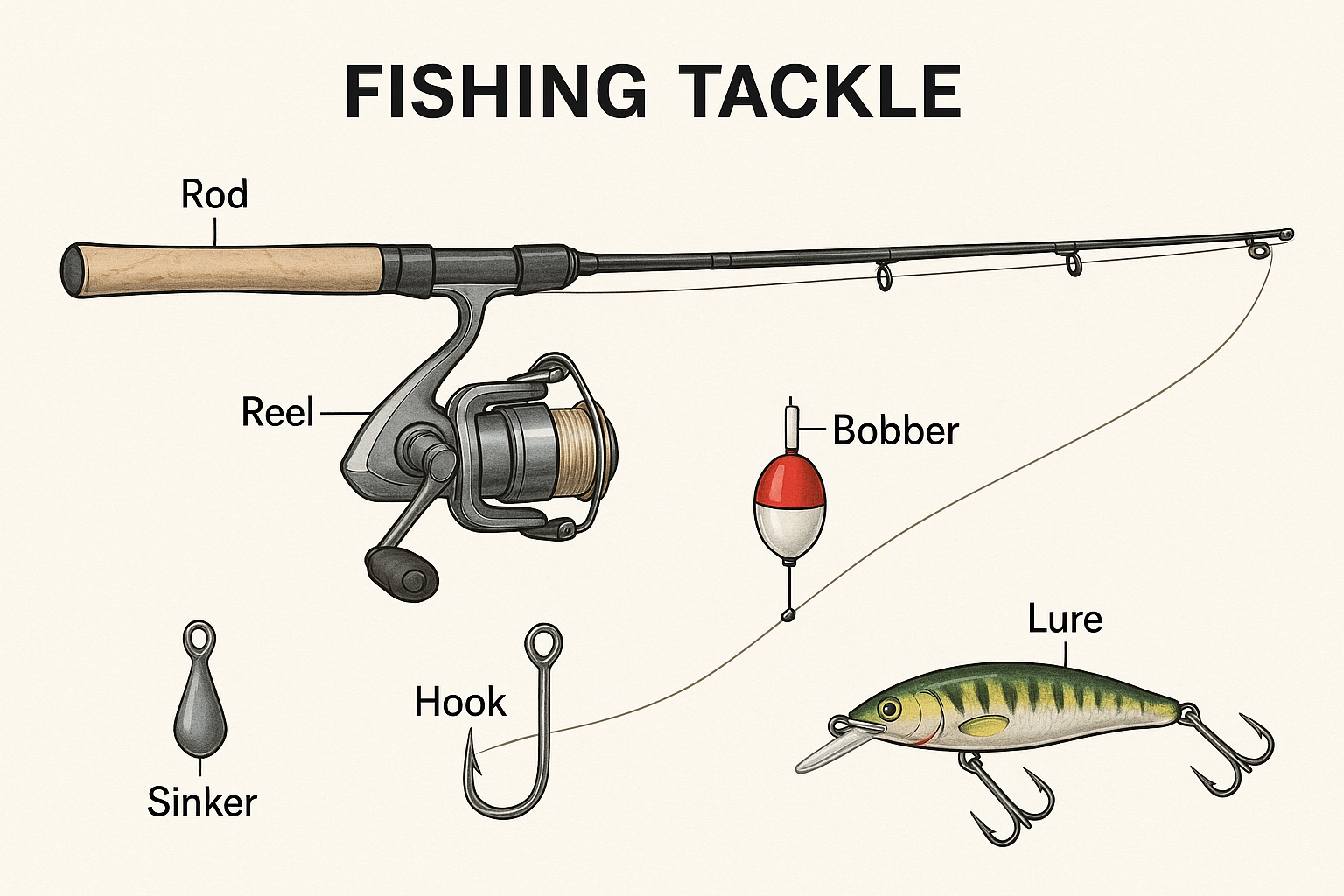
What Exactly Is Fishing Tackle?
At its core, fishing tackle is the set of tools that anglers use to present bait or lures to fish. This includes rods, reels, line, hooks, lures, sinkers, bobbers, nets, tackle boxes, and even clothing or accessories that aid in fishing. Some people use the terms “tackle” and “gear” interchangeably, but there is a subtle difference. Gear can include everything related to fishing, such as boats and electronics, while tackle usually refers to the direct equipment used to catch fish.
The term dates back centuries. Early anglers in Europe used “tackle” to refer to the ropes and equipment used on ships and adapted the word for fishing equipment as well. Today, tackle has expanded to include modern technologies, innovative materials, and specialized tools that fit every type of fishing style.
The Building Blocks of Fishing Tackle
For beginners, fishing tackle may seem overwhelming. Tackle shops are filled with rows of rods, racks of lures, and bins of hooks in every size imaginable. But the foundation of tackle comes down to a few essential categories.
The first and most obvious is the rod and reel. A fishing rod provides leverage and control for casting, while the reel stores and retrieves line. The choice of rod and reel depends on what type of fishing you want to do. Spinning reels are versatile and excellent for beginners, while baitcasting reels provide more precision for experienced anglers. Fly reels are specialized for fly fishing, and trolling reels are built for big offshore species.
Next comes fishing line. Lines are made from monofilament, braided fibers, or fluorocarbon. Each type has strengths and weaknesses. Monofilament is inexpensive and forgiving, making it a good all-purpose choice. Braided line offers incredible strength for its diameter, which is useful for heavy cover or deep water. Fluorocarbon is nearly invisible underwater, which makes it ideal for clear water situations and finicky fish.
Hooks are another critical piece of tackle. They come in countless shapes and sizes, each designed for different species and fishing techniques. Small hooks work for panfish or baitfish, while larger, heavy-duty hooks are necessary for redfish, snapper, or tuna. Choosing the right hook size is essential because a hook that’s too large or too small can cause missed strikes.
Sinkers and weights allow anglers to control the depth at which bait or lures are presented. In moving water, they hold bait near the bottom. In calm bays, they can help sink a live shrimp to a hungry speckled trout.
Floats, or bobbers, are classic pieces of tackle that serve two purposes. They suspend bait at a chosen depth and signal when a fish takes the bait. While many associate bobbers with beginners, experienced anglers also use them strategically in situations where precise depth control is necessary.
Together, these elements form the backbone of fishing tackle. With just a rod, reel, line, hooks, sinkers, and a few floats, you can begin fishing almost anywhere.
Types of Fishing Tackle by Technique
Fishing isn’t a one-size-fits-all activity. Different environments and species require different approaches, which means tackle must adapt. Spinning tackle is by far the most common and accessible. It includes spinning rods and reels that are easy to use, making them ideal for both beginners and experienced anglers. This setup works well for casting light lures, fishing with live bait, and handling a wide range of fish sizes.
Baitcasting tackle is favored by advanced anglers who want more control and accuracy. These reels require practice to avoid backlash, but once mastered, they provide excellent power for targeting large fish. They’re especially popular for bass fishing, though many saltwater anglers also use them for redfish and trout.
Fly fishing tackle is a category all its own. It relies on specialized rods, reels, and weighted line to cast nearly weightless artificial flies. Fly fishing is most common in freshwater streams and rivers, but saltwater fly fishing is also popular for species like redfish, tarpon, and bonefish.
Trolling tackle is built for offshore fishing where boats drag lines and lures behind them at controlled speeds. This requires heavy-duty rods, large reels with high line capacity, and lures or baits designed to mimic the movement of fish at various depths.
Finally, there’s surf fishing tackle. Along sandy beaches, anglers need long rods, powerful reels, and strong line to cast beyond the breaking waves. Surf fishing gear is built to withstand salt, sand, and the strength of hard-fighting species like drum, pompano, and sharks.
Fishing Tackle for Beginners vs. Advanced Anglers
When you’re just starting out, fishing tackle doesn’t need to be complicated. A medium spinning rod, a spinning reel with 10–12 lb monofilament line, a pack of hooks, a few sinkers, and some bobbers are enough to catch a wide variety of fish. Beginners often benefit from pre-assembled starter kits, which provide a small selection of essentials in one package.
As you gain experience, you’ll want to expand your tackle. Advanced anglers usually own multiple rods and reels for different situations. They may use lighter gear for speckled trout, heavier setups for redfish, and even offshore gear for snapper and tuna. They also carry a wide variety of lures and terminal tackle to adapt to conditions.
The transition from beginner to advanced isn’t just about owning more gear. It’s about understanding why different tackle is used in different situations. An experienced angler knows when to switch from a popping cork to a jig, or from fluorocarbon to braided line, depending on the conditions and the fish.

Choosing the Right Tackle for Target Species
The Mississippi Gulf Coast is home to a wide variety of fish, and choosing the right tackle for your target species makes all the difference. Inshore anglers targeting redfish need strong hooks, braided line for power, and lures like spoons or soft plastics. Speckled trout, on the other hand, require lighter tackle and more finesse. Flounder prefer bait presented close to the bottom, which means tackle must include heavier sinkers and sharp, thin hooks.
Offshore species demand even more specialized tackle. Red snapper, prized for both their fight and flavor, require stout rods, heavy reels, and strong leaders to withstand the depths and structure where they live. Tuna fishing demands large conventional reels spooled with hundreds of yards of heavy line, strong hooks, and lures or bait rigs that can withstand powerful runs.
By matching tackle to the fish, anglers maximize their chances of success.
Organizing and Maintaining Fishing Tackle
Once you own fishing tackle, keeping it organized and maintained is essential. A tackle box or tackle bag keeps everything in one place and prevents hooks from rusting or lines from tangling. Modern tackle boxes feature customizable compartments for lures, hooks, and weights, while soft tackle bags often include multiple plastic trays for easy organization.
Maintenance extends the life of your tackle. After every saltwater trip, rinse rods, reels, and lures with fresh water to remove salt that causes corrosion. Check your fishing line frequently for frays or nicks, especially if you’ve been fishing around docks, rocks, or shells. Replace line regularly, and sharpen or replace hooks when they begin to dull.
Neglecting maintenance leads to broken lines, rusted gear, and lost fish. A little care after each trip ensures your tackle is ready for the next one.
Modern Innovations in Fishing Tackle
Fishing tackle has evolved dramatically in recent decades. Composite rods made from carbon fiber and fiberglass are lighter and stronger than ever before. Reels feature smooth drag systems and anti-reverse mechanisms that improve performance. Lines are thinner, stronger, and more specialized, giving anglers options for every condition.
Lures have also advanced. From realistic soft plastics to electronic lures that mimic the movement of baitfish, today’s tackle box can include highly sophisticated technology. Even tackle storage has improved, with waterproof boxes and corrosion-resistant designs.
These innovations make fishing more accessible, enjoyable, and successful. They also highlight why anglers need to stay informed and adapt their tackle choices to modern technology.
Common Mistakes with Fishing Tackle
Even seasoned anglers make mistakes with tackle. One of the most common is using the wrong hook size. A hook that’s too big won’t fit in a fish’s mouth, while one that’s too small may bend or break. Another mistake is mismatching line strength to the target species. Heavy line on light tackle reduces casting distance and spooks fish, while light line on big fish risks breakage.
Another common error is neglecting to rinse tackle after saltwater use. Salt is relentless, and failing to clean reels, lures, and hooks will quickly lead to corrosion. Many anglers also overload themselves with unnecessary gear. While it’s tempting to buy every new lure on the market, experience teaches that a few reliable tackle choices often outperform an overstuffed tackle box.
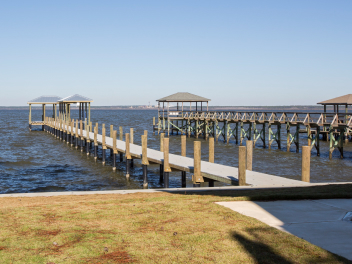
How a Private Dock Enhances Your Use of Fishing Tackle
Having all the tackle in the world doesn’t mean much if you don’t have convenient access to the water. This is where a private dock comes in. With a dock built by Lamulle Construction, your fishing tackle is always just steps away from being put to use.
Imagine being able to walk outside, tie on a lure, and cast into the water from your own property. Docks make fishing easier, faster, and more enjoyable. They also provide a place to organize tackle, set up rod holders, and even install fish-cleaning stations. For families, docks create opportunities to teach kids how to fish with simple bobbers and hooks in a safe and controlled environment.
A dock transforms fishing tackle from something you store in a garage to something you use almost daily. It bridges the gap between owning tackle and living the lifestyle that tackle makes possible.
Equip Yourself for Success with the Correct Fishing Tackle
Fishing tackle is the backbone of every successful trip on the water. From rods and reels to hooks, sinkers, and lures, it provides the tools needed to catch fish and enjoy the coastal lifestyle. Understanding how tackle works, how to choose the right gear for your target species, and how to maintain it over time separates successful anglers from frustrated ones.
For homeowners on the Gulf Coast, a private dock adds even more value. It provides instant access to the water, making it easy to use your tackle whenever you feel like fishing. It turns fishing from a once-in-a-while outing into a way of life.
At Lamulle Construction, we’ve built docks, boathouses, and bulkheads across Louisiana and Mississippi for decades. We understand the unique needs of Gulf Coast property owners, and we design marine structures that last through storms, salt, and time. If you’re ready to take your fishing lifestyle to the next level, contact Lamulle Construction today. Let us build the dock that makes your fishing tackle—and your waterfront living—more rewarding than ever.

